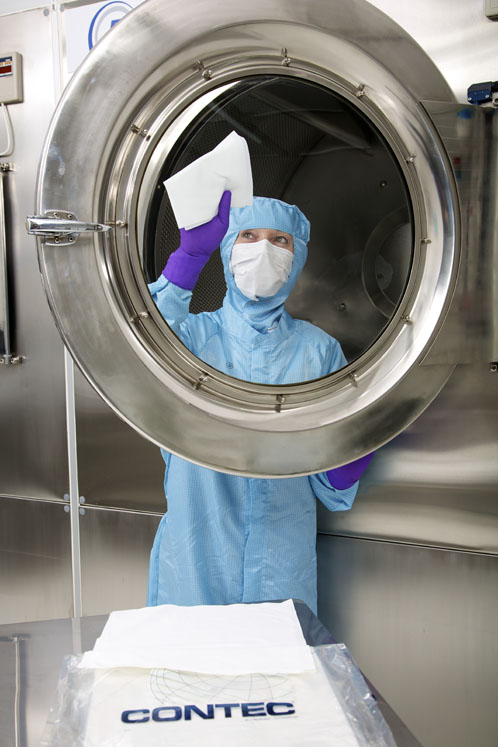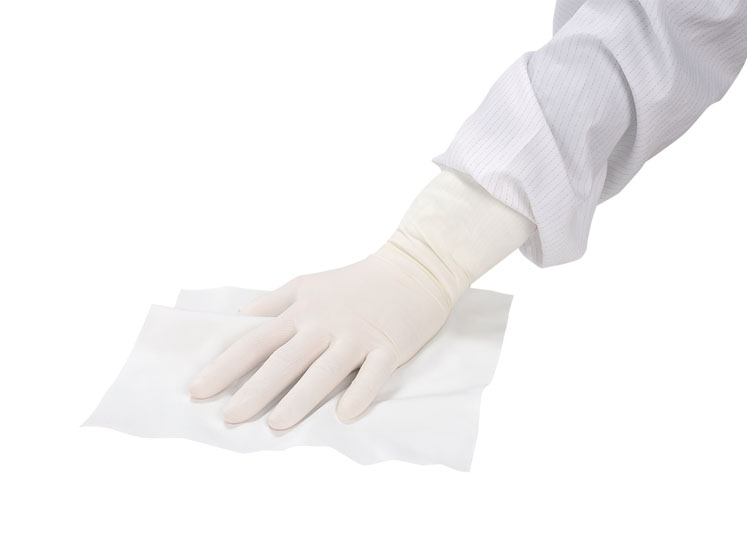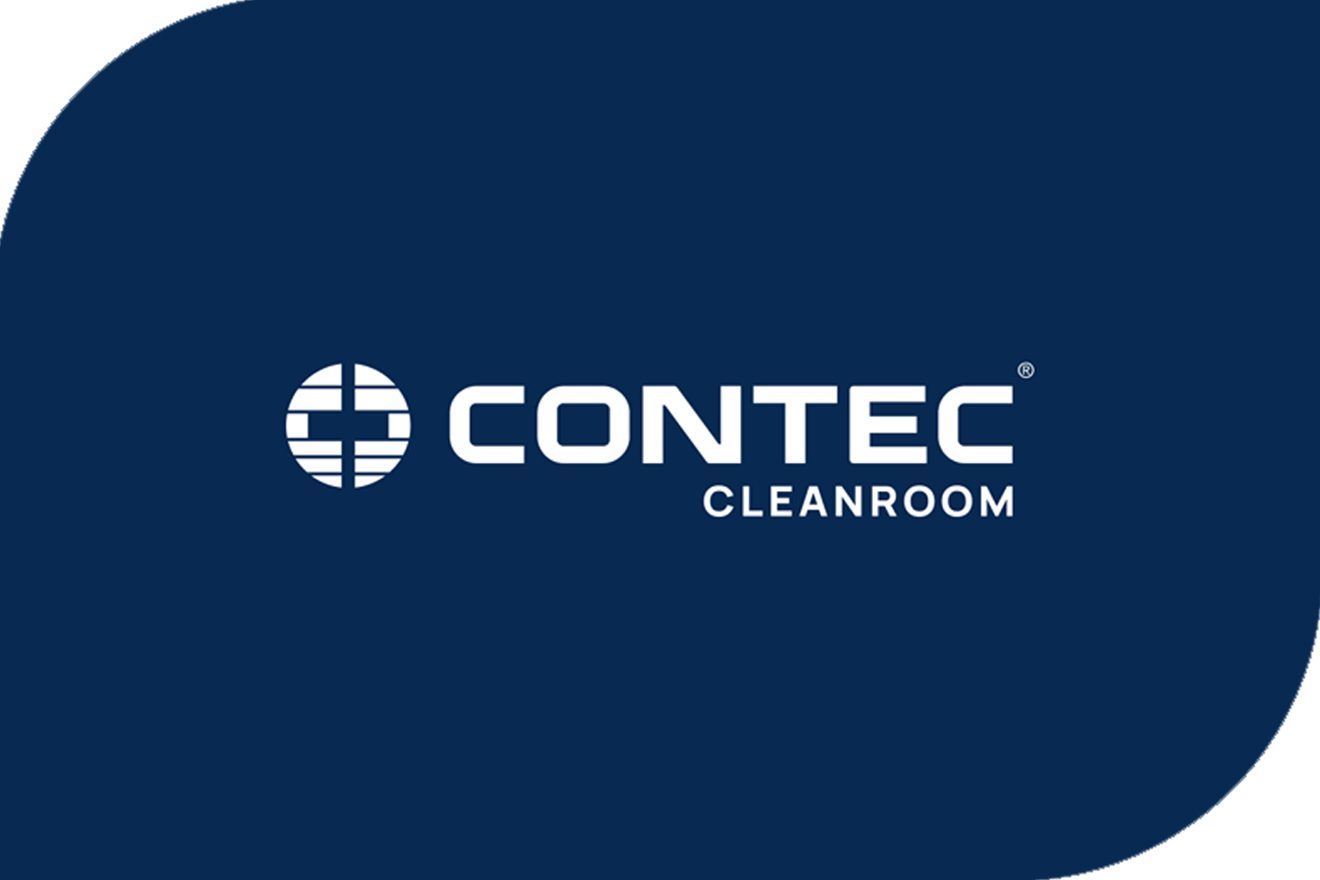Each industry has its own critical parameters: these range from ions and particles in electronics to microbes, endotoxins and particles in the life science sector and fibres and silicone in automotive painting and graphics printing. The control of these critical parameters is very often achieved by the use of dry or presaturated wipes.
There is a huge range of wipes available to cleanroom users that are manufactured from a wide variety of substrates, made using different production methods, finished with different surface treatments to enhance particle pick-up or increase sorbency, and come in differing weights, size, level of cleanliness and choice of impregnate.
Wipes manufactured from recycled materials are also now available to provide a more sustainable option for contamination control in a cleanroom environment.
There are huge benefits to using a wipe in a cleanroom environment, including the fact that they are convenient and easy to use compared with other methods of cleaning. Various studies have shown that wiping is a very effective way to control contamination on a hard surface.
Mechanical action overcomes the various forces holding fine particles (including submicron ones) to surfaces. This, coupled with the fact that the structure of the wipe itself allows for the entrapment of particles and the subsequent physical removal of them from the surface, explains why wiping is so effective.
When used to apply disinfectants and detergents, they reduce the environmental impact of the cleanroom itself as the application of potentially aggressive chemicals can be controlled. The use of prewetted wipes further increases the health and safety benefit by reducing the amount of airborne chemicals in the cleanroom environment.

Wipe characteristics
The characteristics of individual wipes affect their performance. There is always a compromise to be made between the different characteristics of available wipes; the decision regarding which one to choose for a particular application should be risk-based according to the relative impact on a product or process.
Comparing wipes from different sources is an inexact science because of the variability between different analytical methods and testing equipment. Wipes are typically tested for particles and fibres of specific sizes, non-volatile residues (NVRs) in different solvents, specific inorganic ions and sorbent capability, volume and speed of liquid uptake.
Test methods for wipes have been designed by both manufacturers and end users; however, the most commonly used, internationally recognised standard test methods are those of the Institute of Environmental Sciences and Technology (IEST), namely “IEST-RP-CC004: Evaluating Wiping Materials Used in Cleanrooms and Other Controlled Environments.”
The test methods for particles and fibres often vary considerably ... and the results even more so. The tests for residues and ionic contaminants are more established and repeatable. However, the only way to truly compare results for different wipes is if they have been tested using the same method by the same laboratory.
Cleanliness: Every wipe will contain some contaminants, so it’s important to minimise the deposition onto critical surfaces during wiping. Laundered, sealed-edge synthetic wipes are the cleanest available option; however, they are also less sorbent and more expensive than wipes containing natural fibres.
Test results are usually declared for particles and fibres, with fibres generally referring to individual “long” particles of more than 100 mm. Various wet and dry particle release test methods are available that often involve optical microscopy, an automatic particle counter or a scanning electron microscope to count the particles released.
Sorbent properties: This is the ability of the substrate to absorb liquids into the hydrophilic fibre itself or adsorb liquids into the interstitial spaces between the fibres. Sorbent properties are critical for the removal of liquids, especially when wiping to dry.
Wipes containing natural fibres have better sorbent properties; however, they tend to release higher levels of particulates and fibres. In general, synthetic wipes (polyester and polypropylene) tend to be more sorbent as the fibre size is reduced — with microfibre products being the most sorbent option. Test results are usually available for intrinsic and extrinsic sorbency and rate of sorption.
Weight (often expressed as g/m2) influences the sorbent capacity and cost.
Non-volatile residues: NVRs are a measure of contamination that will not evaporate. An NVR is a contaminant residue with indistinct dimensions and typically consists of hydrocarbons, silicones, dioctyl phthalates or other high molecular weight chemicals. Non-volatile data is usually generated using both deionised water and isopropanol. Results are expressed in grams of extractables per square metre, which is a useful guide to the relative purity of the wipe.

Metallic and other ions: Semiconductor and data storage industries are very concerned about ion contamination from a wipe; for the most sensitive industries, wipes with individual ion levels below 1 ppm are utilised. Knitted laundered polyester wipes are able to meet this criterion.
Sodium and chlorine are two of the ions of most concern. Ions are extracted in deionised water and quantitatively analysed by ion chromatography. Results are stated in parts per million (ppm). Ions are of little concern in a pharmaceutical or biotechnology environment.
Sterility and endotoxins: For aseptic applications, wipes are sterilised (usually by a validated gamma irradiation or autoclave procedure). EU GMP stipulates that all products used in Grade A and B environments should be sterile prior to use.
Sterile does not necessarily infer that the product is low in endotoxins and these must be tested and declared separately. The initial bioburden is generally lower for synthetic materials than those containing natural fibres … and this is critical to achieve low endotoxin levels.
Chemical compatibility: Pure synthetics such as polyester nonwoven and knitted fabrics offer the greatest range of chemical compatibility, whereas those containing cellulose are susceptible to degradation by moderately caustic solutions.
Wipe classification
Wipes can be classified according to their cleanliness and physical characteristics, as described above. These characteristics are always determined by the following variables. What material the wipe is made from?
Synthetic, natural or blended fibres can be used. Generally, synthetic materials have longer fibres that are cleaner than natural fibres. Blends of materials are used to create compromises between cost, particles or efficiency.
Size of the threads: The definition of a microfibre is one with less than 1 decitex per filament, whereby a decitex is a measure commonly used to describe the size of a filament or fibre. One decitex is nine tenths of a denier.
Split microfibres have an expanded surface area that provides the ability to collect microscopic particles from a surface and dramatically increases a wipe’s sorbency.
How is the wipe is constructed? Wipe substrates can be created by knitting, a nonwoven process such as hydro-entangling, melt-blowing, chemical bonding or weaving. Using chemical binders may not be suitable for use in all grades of room.
How is the fabric converted into wipes? Are the wipes knife cut or cut so the edges are sealed? This can be achieved by laser, ultrasonic or thermal means. Sealing the edges reduces the release of particles and fibres. A fully sealed border on all sides can reduce the release of particles even further.Has the fabric been treated or laundered? Laundering the fabric in a cleanroom ensures low levels of ions, non-volatile residues and particles. Sorption enhancers and particle attraction treatments can also be added during finishing. A further consideration is how the wipe is constructed. This, and more, will be explored in Part II.

